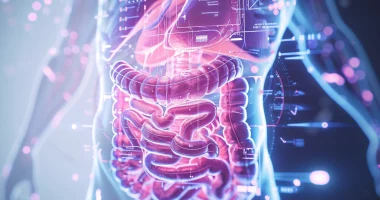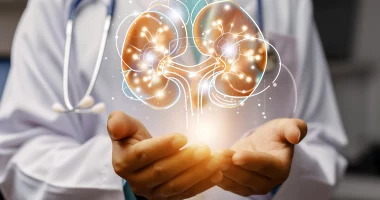Cancer pain
General information
Pain is a reaction of an organ or body part to organic changes in it. It is a defense mechanism of the body under the pathological impact of any factor. There are two main types of pain:
- nociceptive (occurs due to activation of receptors of the peripheral nervous system);
- neuropathic (develops when the central nervous system is damaged).
Pain in cancer is much less common than is generally thought. Painful sensations do not always reach a high intensity. It is difficult to describe the pain syndrome objectively, as each person perceives it individually.
Although the sensation cannot be seen, the manifestation of severe pain in facial expressions, movements, and body position well characterizes the severity of discomfort bothering the patient.
Oncology pain can be acute or chronic. Acute pain is observed after surgery, chemotherapy, and radiotherapy. Chronic discomfort bothers with growing neoplasm and emerging metastatic foci.
Metastases grow into adjacent healthy organs and tissues, affecting nerve endings. In the oncological process of the lungs, the pain syndrome makes itself known when the pleural sheets are involved. Kidney or liver cancer is accompanied by painful sensations when the capsule of the organ is affected. The bones of the skeleton with oncologic pathology hurt together with the spread of the malignant process to the periosteum.
How to relieve cancer pain
Severe pain in cancer limits daily activity and restricts movement. Attacks of acute pain subside, while chronic discomfort often leads to bed rest, as movement provokes increased discomfort.
The following will help neutralize the symptom:
- impact on the root cause (underlying disease) of the pain;
- increasing the pain threshold due to particular medications;
- therapeutic blockades with anesthetic agents, corticosteroids;
- the patient’s work with a psychologist;
- Lifestyle adjustments to alleviate pain.
Neutralizing painful sensations is not limited to taking painkillers. In the case of increasing discomfort in bone metastases, doctors recommend a course of treatment with chemotherapy, radioactive drugs, and bisphosphonates.
Possible complications
Severe pain manifests from growing tumors and emerging metastatic sources. The symptom disrupts the usual order of life: the patient cannot sleep, eat, or move. Increasing painful sensations interfere with decision-making and everyday work. Also, the symptomatology negatively affects the work of internal organs and systems.
Modern medicine can keep pain under control in almost 100% of cases, making it possible for cancer patients to maintain a decent quality of life.
Causes of cancer pain
Specialists distinguish the following causes of pain with oncologic pathology:
- Sprouting or compression of body tissue structures by a malignant neoplasm or a complication that has developed. An example would be a pathologic fracture of the cervical, thoracic, or lumbar spine due to metastatic foci.
- Cancer exhaustion (cachexia) often provokes the appearance of musculofascial pain.
- Special oncologic treatment. After radiation therapy, the patient has pain in the cervical and lumbar spine. Chemotherapy entails neuropathies characterized by peripheral nerve damage.
- Associated chronic pathology: hypertension (headaches), ischemic heart disease (heart pain).
Diagnostic methods
To determine the cause of cancer pain, the most commonly used in daily practice are:
- physical examination. Examination of the patient allows you to determine the approximate level of accumulated fluid;
- biochemical blood analysis – assesses the state of the hepatobiliary system (liver functionality) and kidneys. Blood analysis gives an idea of its coagulability, the level of electrolytes;
- X-ray and ultrasound examinations of the abdominal cavity visualize the accumulated fluid;
- CT MRI will clarify the presence of ascites;
- laparocentesis – the doctor pierces the abdominal wall with a special needle and analyzes ascitic fluid. The procedure helps to determine the cause of ascites. It also determines whether the pathological fluid is infected and atypical cells are in it.
Choosing the best analgesia requires understanding where the pain is localized, how long it has been bothering, and its intensity. The physician examines the patient thoroughly and offers a choice of a numerological rating scale and a visual analog scale. The Visual Analog Scale (VAS) is a 10-centimeter ruler on the back (ungraded) side, on which the patient is asked to mark a point corresponding to the pain level. The left border of the line means “no pain,” and the right border means “unbearable pain.” A ruler measures the gap between “no pain” and the marked point. The Numerological Assessment Scale (NOS) is a 10-centimeter ruler with numbers from 0 to 10 marked on it, where 0 is “no pain,” and 10 is “unbearable pain.” The patient marks a number from 0 to 10, corresponding to the intensity of their pain syndrome.
If the patient suffers from cognitive (mental) impairment, his or her behavior and facial expressions help determine the severity of pain sensations.
Treatment methods
The main goal of pain treatment is to achieve a lasting analgesic effect. There are several therapeutic stages, for each of which certain groups of drugs are used. Start with the least toxic, gradually selecting drugs with a large number of adverse reactions.
Principles of interventions in pain management:
- an individualized approach to the choice of analgesic should be taken into account;
- The standard sequence of prescriptions should be followed, using drugs that have been proven to be effective;
- in case of decreased sensitivity to the selected medication, a more potent drug should be chosen;
- At each stage, auxiliary agents, including those affecting the central nervous system, can be added to the main anesthetic;
- A symptom is easier to prevent than to treat. Therefore, the interval between taking an analgesic depends on the duration of its effect. The medicine is taken before the onset of complaints;
- The best forms of medicines are tablets or suppositories. Injectable forms are chosen when other options are ineffective.
Some of the most effective methods of dealing with cancer pain include:
- Therapeutic blockade is performed by injecting an anesthetic into a peripheral nerve or spasmed muscle area. The blockade not only relieves pain but also helps to relax muscles, normalize blood flow, and improve tissue tropism.
- Neurolysis of plexuses and ganglia is a technique similar to blockade. During neurolysis, a substance is injected into the area of the plexus or node. It is not anesthetic, but it destroys the nerves, which are subsequently replaced by connective tissue. The conduction of impulses from the peripheral focus in the brain is permanently stopped.
- Radiofrequency denervation is a modern method of pain relief, which is used in the absence of effects from conservative therapy. Pain syndrome is relieved due to the effect of temperature on the nerves that conduct the pain impulse. Safety and minimally invasive technique allow the procedure to be performed without hospitalization.
- Spinal cord stimulation is one of the main methods of neuromodulation for treating chronic pain syndrome, spasticity syndrome, and pelvic organ dysfunction. The effect is achieved using electrical impulses delivered by electrodes implanted in the epidural space.
All these treatment options are available in more than 590 hospitals worldwide (https://doctor.global/results/diseases/cancer-pain). For example, Spinal cord stimulation (SCS) can be performed in 8 clinics across Germany for an approximate price of $8.2 K (https://doctor.global/results/europe/germany/all-cities/all-specializations/procedures/spinal-cord-stimulation-scs).


